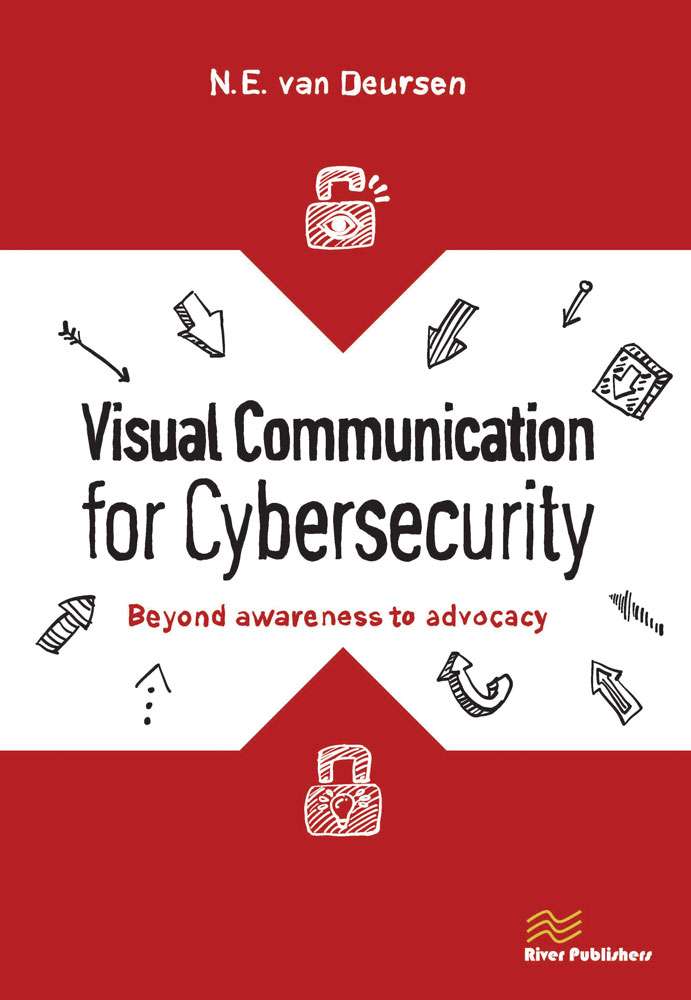Digital Security and Forensics
Visual Communication for Cybersecurity
Beyond Awareness to Advocacy
Author: Nicole van Deursen, Researcher, the Netherlands
ISBN: 9788770220903 e-ISBN: 9788770220897
Available: March 2020
Cybersecurity needs a change in communication. It is time to show the world that cybersecurity is an exciting and diverse field to work in. Cybersecurity is not only about hackers and technical gobbledygook. It is a diverse field of work with a lot of collaboration with other disciplines. Over the years, security professionals have tried different awareness strategies to promote their work and to improve the knowledge of their audience but without much success. Communication problems are holding back advances in in the field.
Visual Communication for Cybersecurity explores the possibilities of visual communication as a tool to improve the communication about cybersecurity and to better connect with non-experts. Visual communication is useful to explain complex topics and to solve complex problems. Visual tools are easy to share through social media and have the possibility to reach a wide audience. When applied strategically, visual communication can contribute to a people-centric approach to security, where employees are encouraged to actively engage in security activities rather than simply complying with the policies.
Cybersecurity education does not usually include communication theory or creative skills. Many experts think that it is not part of their job and is best left to the communication department or they think that they lack any creative talent. This book introduces communication theories and models, gives practical tips, and shows many examples. The book can support students in cybersecurity education and professionals searching for alternatives to bullet-point presentations and textual reports. On top of that, if this book succeeds in inspiring the reader to start creating visuals, it may also give the reader the pleasure of seeing new possibilities and improving their performance.
The book is divided into different parts for readers with different interests. There is no need to read the book from cover to cover; the chapters are organized thematically. Readers that are interested in how to apply communication theory to cybersecurity will enjoy the chapters about learning, the context in which communication takes place, and how people are persuaded. Readers that are looking for inspiration and examples of how to use visuals in their daily tasks go straight to the third section of the book. The last section is a workbook that will help the reader to take the first steps towards using visual communication at work.
Visual Communication for Cybersecurity explores the possibilities of visual communication as a tool to improve the communication about cybersecurity and to better connect with non-experts. Visual communication is useful to explain complex topics and to solve complex problems. Visual tools are easy to share through social media and have the possibility to reach a wide audience. When applied strategically, visual communication can contribute to a people-centric approach to security, where employees are encouraged to actively engage in security activities rather than simply complying with the policies.
Cybersecurity education does not usually include communication theory or creative skills. Many experts think that it is not part of their job and is best left to the communication department or they think that they lack any creative talent. This book introduces communication theories and models, gives practical tips, and shows many examples. The book can support students in cybersecurity education and professionals searching for alternatives to bullet-point presentations and textual reports. On top of that, if this book succeeds in inspiring the reader to start creating visuals, it may also give the reader the pleasure of seeing new possibilities and improving their performance.
The book is divided into different parts for readers with different interests. There is no need to read the book from cover to cover; the chapters are organized thematically. Readers that are interested in how to apply communication theory to cybersecurity will enjoy the chapters about learning, the context in which communication takes place, and how people are persuaded. Readers that are looking for inspiration and examples of how to use visuals in their daily tasks go straight to the third section of the book. The last section is a workbook that will help the reader to take the first steps towards using visual communication at work.
Cybersecurity; communication theory; visual communication; visual literacy; information security awareness
